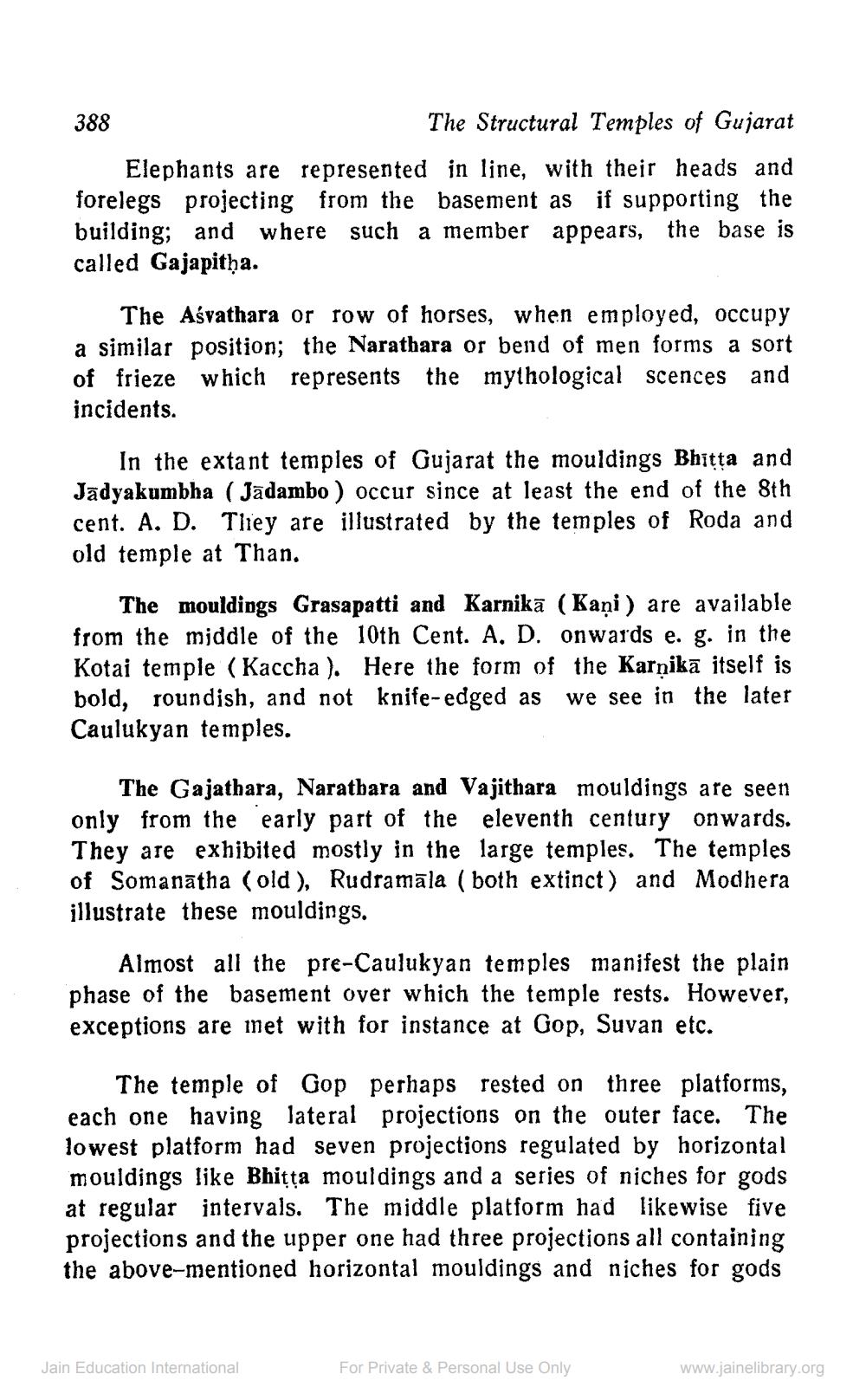________________
388
The Structural Temples of Gujarat Elephants are represented in line, with their heads and forelegs projecting from the basement as if supporting the building; and where such a member appears, the base is called Gajapitha.
The Aśvathara or row of horses, when employed, occupy a similar position; the Narathara or bend of men forms a sort of frieze which represents the mythological scences and incidents.
In the extant temples of Gujarat the mouldings Bhitta and Jadyakumbha (Jādambo ) occur since at least the end of the 8th cent. A. D. Tliey are illustrated by the temples of Roda and old temple at Than.
The mouldings Grasapatti and Karnikā (Kaņi) are available from the middle of the 10th Cent. A. D. onwards e. g. in the Kotai temple (Kaccha). Here the form of the Karņikā itself is bold, roundish, and not knife-edged as we see in the later Caulukyan temples.
The Gajathara, Naratbara and Vajithara mouldings are seen only from the early part of the eleventh century onwards. They are exhibited mostly in the large temples. The temples of Somanātha (old), Rudramāla (both extinct) and Modhera illustrate these mouldings.
Almost all the pre-Caulukyan temples manifest the plain phase of the basement over which the temple rests. However, exceptions are met with for instance at Gop, Suvan etc.
The temple of Gop perhaps rested on three platforms, each one having lateral projections on the outer face. The lowest platform had seven projections regulated by horizontal mouldings like Bhitta mouldings and a series of niches for gods at regular intervals. The middle platform had likewise five projections and the upper one had three projections all containing the above-mentioned horizontal mouldings and niches for gods
Jain Education International
For Private & Personal Use Only
www.jainelibrary.org




